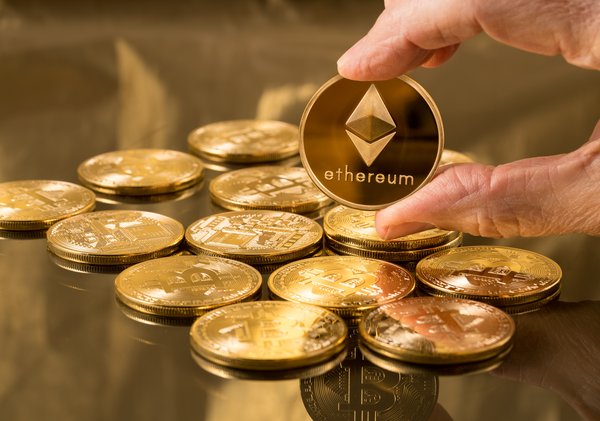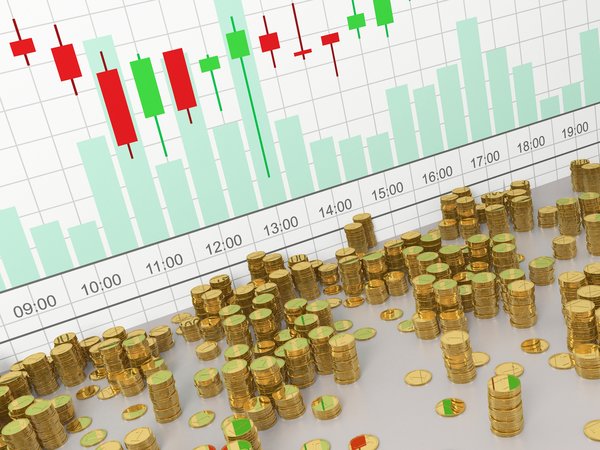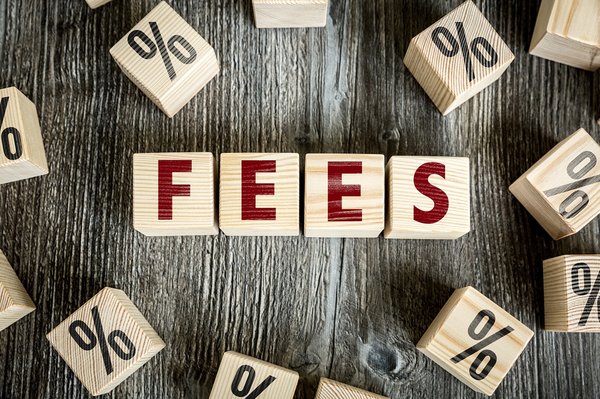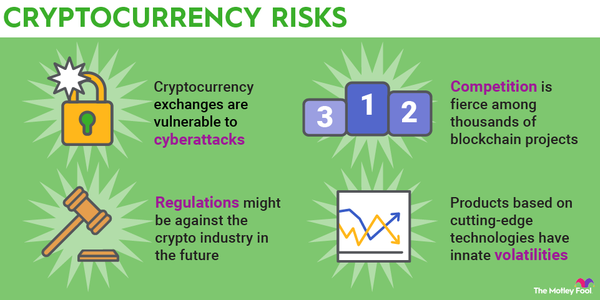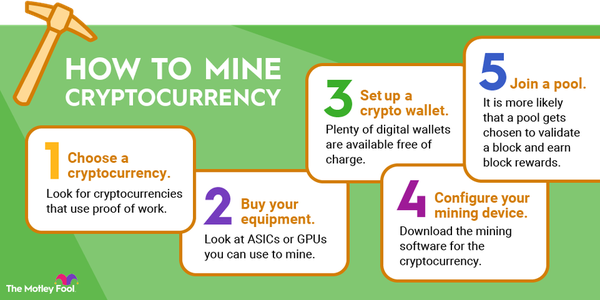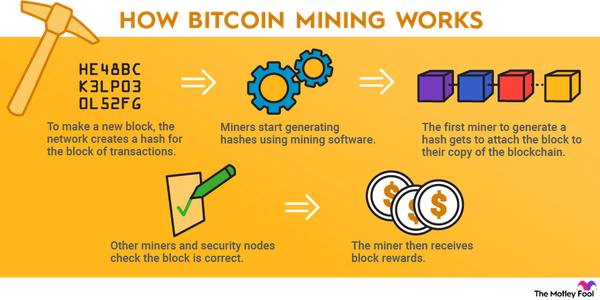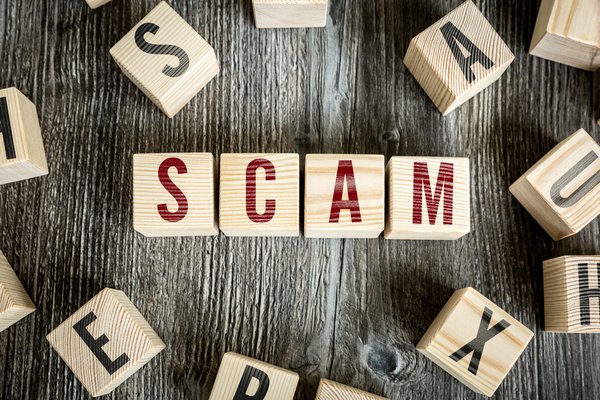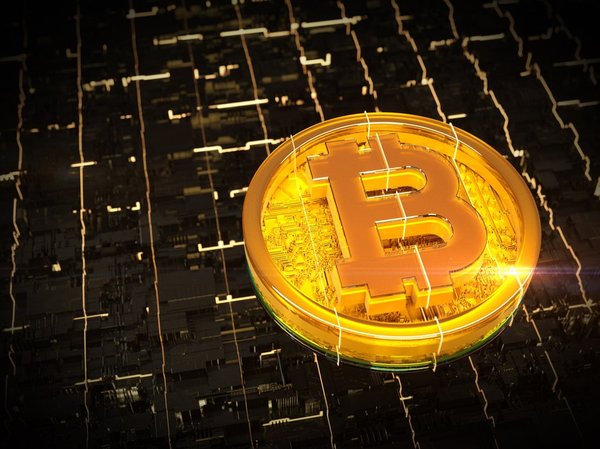One of the most common questions about cryptocurrency is how it works. Even though the market has exploded in value and some cryptocurrencies, like Bitcoin (BTC -3.91%), have become household names, what they actually do is still a mystery to many people. If you're interested in investing, or you want to better understand their impact, it's worth knowing how cryptocurrency works.
What is cryptocurrency?
What is a cryptocurrency?
A cryptocurrency is a digital currency managed by a distributed network of devices. Unlike traditional currencies, a cryptocurrency isn't controlled by a central authority like a bank or a government. It has a decentralized structure where control is split among users.
To secure transactions, cryptocurrencies use cryptography -- hence their name. Transactions and account balances are tied to crypto wallet addresses, which use a series of numbers and letters.
How does it work?
How does cryptocurrency work?
A cryptocurrency needs to be able to process transactions with no central authority managing it. To accomplish this, it relies on a network of nodes. Each node is a device that runs the cryptocurrency's software, giving it the ability to validate and record transactions.
As people send and receive the cryptocurrency, transactions are sorted into groups called blocks. Every node checks these transactions. The cryptocurrency's protocol then selects a node to officially check that the transactions are correct, and, if so, to record them.
Cryptocurrencies select nodes with a consensus mechanism. Every consensus mechanism essentially requires that nodes put something on the line, such as computing power, crypto funds, or even their reputation, to show they can be trusted. Here are the two most popular systems:
- Proof of work requires that nodes demonstrate they've expended computing power. This is referred to as mining crypto.
- Proof of stake requires that nodes put up cryptocurrency funds as collateral. This is referred to as staking crypto.
There are several other systems out there, each with its own pros and cons. For another example, proof of authority requires that node operators dox themselves by providing identifying information.
Once a node has verified a block of transactions, it approves them. In return for this service, the node receives a block reward of cryptocurrency funds. These could be newly minted tokens, transaction fees paid by users, or a combination of the two.
However, if a node confirms incorrect transactions, it's penalized by the network. The cryptocurrency's network verifies that each block is correct by seeing if the other nodes approved it.

What is blockchain?
What is a blockchain?
A blockchain is a distributed ledger of transactions. Simply put, it's a full record of all the transactions that have taken place for a cryptocurrency, and it's updated as more blocks of transactions are validated and added to the chain. All the nodes in a cryptocurrency's network have a copy of its blockchain.
Cryptocurrencies usually have immutable blockchains. Once transactions are confirmed and added to the blockchain, there's no way to reverse them.
Blockchains were originally designed solely for recording cryptocurrency transactions. That changed with Ethereum (ETH -3.47%), which introduced the concept of smart contracts.
Smart contracts are programs built on a blockchain, significantly expanding what developers have been able to do with this technology. By bundling smart contracts together, they can create decentralized apps (dApps). Just like your computer and smartphone can run all kinds of apps, blockchains can run any kind of dApp that a developer can imagine.
Cryptocurrency ecosystems
What is a cryptocurrency ecosystem?
A cryptocurrency ecosystem refers to all the projects built on a specific blockchain. For example, the Ethereum ecosystem refers to everything that developers have launched on Ethereum, including crypto exchanges, games, and non-fungible tokens (NFTs), which use smart contracts to indicate who owns a digital asset.
Every blockchain with smart contract functionality has its own cryptocurrency ecosystem. There's a Cardano (ADA -5.77%) ecosystem, a Solana (SOL -7.17%) ecosystem, and an Avalanche (AVAX -10.01%) ecosystem, to name a few. All those cryptocurrencies have blockchains that run smart contracts.
How does a cryptocurrency ecosystem work?
Smart contract blockchains provide software platforms that developers can build on. These platforms are also known as virtual machines, and they're like computers running on a blockchain. Developers who want to launch smart contracts and dApps on a blockchain do so using its virtual machine.
The most famous example is the Ethereum Virtual Machine (EVM). All accounts and smart contracts running on Ethereum are built on the EVM, and they're all compatible with each other.
As more developers launch their projects on a blockchain, it builds a larger ecosystem. Here are a few of the most common types of projects on a typical cryptocurrency ecosystem:
- Decentralized finance (DeFi) platforms that provide a blockchain alternative to traditional financial services, such as cryptocurrency savings accounts and lending platforms that provide loans using your crypto as collateral.
- NFT marketplaces where you can buy, sell, and mint NFTs.
- Blockchain games that use cryptocurrency as in-game currencies and/or NFTs as characters and items.
Mining cryptocurrency
How mining cryptocurrencies works
Cryptocurrency mining is how cryptocurrencies use the proof-of-work system to validate transactions and mint new coins. The mining process starts with the cryptocurrency protocol generating a target hash, which is a string of characters, for a block of transactions. Each protocol has a mining algorithm that it uses to generate these hashes.
Miners then generate their own hashes with the goal of generating one that's less than or equal to the target hash. The first miner to succeed wins that block. If the miner validates the transactions correctly, they receive the block reward.
The block reward is paid in that blockchain's cryptocurrency. It's usually paid in newly minted coins, meaning it's also how coins are introduced into the network. It can also be paid using the network's transaction fees.
People often wonder how to mine cryptocurrency. Technically, you can use any device to run the blockchain network's mining software, generate hashes, and join the process. Actually winning a block normally requires advanced hardware designed specifically for cryptocurrency mining. The device also needs to run around the clock, eating up a significant amount of energy.
Buying and selling cryptocurrency
How buying cryptocurrencies works
The most common way to buy cryptocurrencies is through a cryptocurrency exchange. A cryptocurrency exchange is similar to a stockbroker, only it offers cryptocurrencies instead of stocks.
When you have an account with a crypto exchange, you can buy cryptocurrencies using funds from a bank account. Some exchanges also accept other payment methods, such as debit or credit cards, but bank account transfers tend to have the lowest fees.
U.S. crypto exchanges usually require that you verify your identity to sign up for an account. This is part of the know-your-customer (KYC) process. You'll need to provide your Social Security number, address, and possibly a photo of your ID.
Related crypto topics
How selling cryptocurrencies works
Cryptocurrency exchanges are also the most common way to sell cryptocurrencies. You can sell any of the cryptocurrencies supported by an exchange for fiat money, which you can then transfer to a bank account.
If you want to sell cryptocurrency stored in a wallet, meaning it's not in an exchange account, then you have a couple of options. The simplest is to sign up with a crypto exchange, transfer the funds there, and sell them.
There are also peer-to-peer platforms that connect crypto buyers and sellers. Bisq is a popular option for this. Selling this way isn't beginner-friendly, and there's a much higher risk of scams, so using a major exchange is better for most investors.
Now that you've learned how cryptocurrency works, you can decide if you're interested in investing. Bitcoin and Ethereum are good places to start; they're the biggest cryptocurrencies and have the longest track record of success. If you're not sure about buying cryptocurrencies yet, another option is investing in cryptocurrency stocks.
While cryptocurrencies and blockchain technology are exciting, the crypto market is highly volatile. There's the potential for huge gains or losses. It's recommended to take a measured approach, limiting crypto to a small amount of your total portfolio, and focusing on long-term results over short-term price changes.








